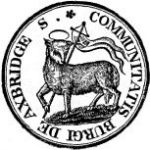Members and friends enjoyed an excellent talk given by Mary Miles. She first of all explained something of the history of beer; one of the earliest recipes that has been found being 6300 years old and written on a clay tablet in Babylon.
Beer was originally flavoured with herbs such as alecost, bog myrtle, liquorice and coriander and called Ale – the word beer being used after hops were used.
Although much of the beer was for home consumption, hostelries, monasteries and churches all brewed their own version of ale. Church ales were used to supplement parish income and she showed a photo of Crowcombe Church house which had both brewing and baking facilities. Of course then, as now, people sometimes got somewhat merry and, according to Mary, Thomas Wolsey was put into the stocks by the church warden for being inebriated. Church Ale sales were suppressed in the 17th century and the church houses re-purposed.
In those early days brewing was the preserve of women. “Ale-wife” or “brewster” is a designation from the Anglo-Saxon period in England, between the 5th century and the Norman Conquest, when it was the responsibility of the woman of the house to make sure the men were well supplied with beer. These Ale wives did, however, come into disrepute and were accused of lying, cheating and some were said to be consorting with thedevil. Their reputation was well described by Skelton in his poem “Eleanor Rummyng” (shown left above).
Following the Norman invasion wine production increased, but ale continued to be the staple drink, being, cheap, sterile and reasonable nutritious. This was of course “small beer” (a watered down version) and Mary suggested that as late as the 1600’s men, women and children were drinking about 3 quarts a day. Following the Protestant Reformation, a temperance movement began to grow as a reaction to Catholic indulgence. Protestant reformers saw ale as yet another area of sin and corruption.
Once hops were introduced, the brewing of beer became a male preserve, not least because the process was increasingly mechanised with corn dryers, malt kilns etc.
Mary went on to explain the beer-making process and the development of the industry with the increasing standardisation and industrialisation. She detailed the history of several large breweries such as Anglo-Bavarian at Shepton, the introduction of lighter ales using invert sugar which we know as
German lager and the production of IPA. These lighter ales became popular not least because from 1850 they looked good in the beer glasses then being produced.
By the 19th century, concern over drunkenness caused the rise of the Temperance movement. It was interesting to note, however, that they produced aerated drinks some of which turned out to be stronger than beer!
Mary finished by looking at the evidence of brewing in our local area and this will be explored at a later date
